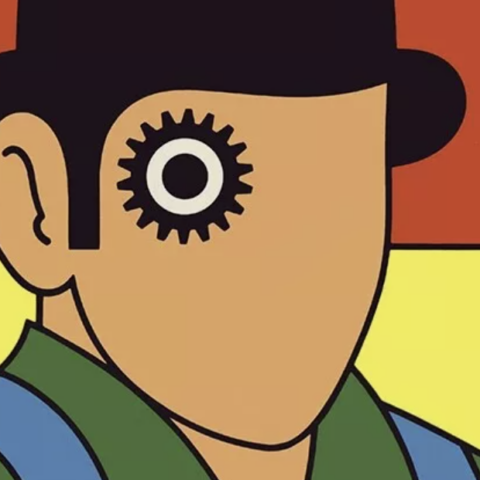The Golden Age Of Harlem
By Fleur Chattillon
Where would we be without The Renaissance; This cultural movement, was a golden age moment in Italy at the beginning of the 14th century, some of the greatest thinkers, authors, statesmen, scientists, art and artists in human history thrived during this era, Think of the Medicis, an Italian banking family and political dynasty who financed much of the world-renowned artworks and had incredible power in Florence and the most amazing artist such as Leonardo DaVinci, Michelangelo and Botticelli. A Thriving period in time that would change the world forever. Well, just like the Renaissance, being an important period in the cultural history of the world, came maybe a more unfamiliar period, the so-called ‘Harlem Renaissance’, which had the same elemental and cultural revival for African American artists, writers and musicians in the USA. It gave these artists pride in and control over how the Black experience was represented in American culture and set the stage for the Civil rights movement. Poetry, Music, Jazz and Art fuelled the neighbourhood of Harlem’s thriving cultural scene. Find out more in The Golden Age Of Harlem.
The image on left is an Installation view of Once Again. Statues Never Die, Barnes Foundation 2022. Photo made by Henrik Kam.
The Harlem Renaissance was the development of the Harlem neighbourhood in New York City as a Black cultural mecca in the early 20th Century and the subsequent social and artistic explosion that resulted. Lasting roughly from the 1910s through the mid-1930s, the period is considered a golden age in African American culture, manifesting in literature, music, stage performance and art.
125th Street – Harlem, New York, Image by Doug Kerr
Not only during this period did the African American culture blossom in the neighbourhood of Harlem but also in many places in America and the world. But by far the most influential and important poets, artists, writers and musicians came from Harlem.
The northern Manhattan neighbourhood started out as an upper-class white neighbourhood in the 1880s, but rapid overdevelopment led to empty buildings and landlords seeking to fill them.
In the early 1900s, a few middle-class Black families from another neighbourhood known as Black Bohemia moved to Harlem, and other Black families followed.
Things began to shift and eventually, this population shift resulted in a Black Pride movement with leaders like William Edward Burghardt Du Bois, a scholar at the historically Black Atlanta University, working to ensure that Black Americans got the credit they deserved for cultural areas of life. One of the books he wrote ‘The Souls of Black Folk’, is a cornerstone of African-American literary history and a seminal work in the field of sociology.
The book cover of ‘The Souls of Black Folk‘, Author is W. E. B. Du Bo, First published in 1903
Du Bois spoke out in many ways and made sure his opinion and visions were heard. He published various works in the form of essays, in which he wrote that Black Americans should embrace their African heritage even as they worked and lived in the United States.
He described the predicament of Black Americans as one of “double consciousness”
“One ever feels his twoness, — an American, a Negro; two souls, two thoughts, two unreconciled strivings; two warring ideals in one dark body, who dogged strength alone keeps it from being torn asunder.”
Du Bois
The term “double consciousness” is still widely used as a theoretical framework to apply to other dynamics of inequality.
Another very important and influential artist who flourished during the Harlem Renaissance was African American Poet Langston Hughes. Poetry was one of the earliest art forms to emerge during the Harlem Renaissance. The poems, novels, columns and plays of Langston Hughes left a big mark during this time and eventually on the upcoming future of the world.
One of the very important things he wrote in ‘The Negoro Artist and the Racial Mountain’, one of his famous essays, was
”We younger Negro artists who create now intend to express our individual dark-skinned selves without fear or shame. If white people are pleased we are glad. If they are not, it doesn’t matter. We know we are beautiful. And ugly too.”
Langston Hughes
The music styles that emerged out of Harlem were Jazz and Blues. Often performed by outstanding musicians in the Harlem underground nightclubs and speakeasies, which you can read all about in our article Jazz Resistance.
One of the most famous clubs in Harlem at the time was the Cotton Club. Jazz became a great draw for not only Harlem residents but outside white audiences also.
Night Club – Cotton Club, Harlem, New York City, NY,
One of the most famous artists that set Jazz on the map was Louis Armstrong. A jazz trumpeter, bandleader and singer people knew for songs like “What a Wonderful World,” “Hello, Dolly,” ”Star Dust” and “La Vie En Rose.” There are still very famous songs to this day.
There were countless other important musicians like Countee Cullen, a trumpet player and poet, Josephine Baker, a singer and dancer, Duke Ellington an originator of big-band jazz, composer and pianist and so many more who set African American artists on the map.
When it comes to Art, the most celebrated Harlem Renaissance artist is Aaron Douglas, often called “the Father of Black American Art,” who adapted African techniques to realize paintings and murals, as well as book illustrations.
He created powerful images of African American life and struggles and won awards for the work he created for these publications.
Into Bondage, portrait by Aaron Douglas, Image by
Amaury Laporte
There are many more amazing examples of incredible people who created art in every type of medium, that made the Harlem Renaissance happen.
Unfortunately like almost all good things, this blossoming period came to an end. The end of The Golden Age of Harlem began with the stock market crash of 1929 (on Wallstreet) and The Great Depression, which was the deepest and longest-lasting economic downturn in the history of the Western industrialized world up to that time.
By 1935, many Harlem residents had moved and were searching for a job. That same year The Harlem Race Riot broke out following the arrest of a young shoplifter. There were rumours that a black Puerto Rican teenage was beaten by employees at S. H. Kress & Co. (A trading name of a chain of five-and-dime retail department stores in the USA).
It started with a demonstration that was held outside the store and, after someone threw a rock through the window, more general destruction of the store ensued. This eventually resulted in three deaths and hundreds of people injured and millions of dollars in damages. This riot meant the beginning of the end of the Harlem Renaissance.
But it resulted in more things than expanding culture. A lot of members that rose from the Harlem Renaissance eventually became activists during the Civil Rights Movement.
Besides the fact that it meant the end of that period in cultural history, it was just the start for many African American musicians, artists, dancers and actors to set off their careers.
To this day many people are still inspired by the Harlem Renaissance since it was a time full of developing and thriving artists in every type of medium.
Isaac Julien is such an artist. He is a British installation artist, filmmaker, and educator at the University of California, Santa Cruz and probably one of the leading artists working in film and video today. He is famous for his critical thinking and the way his work breaks down barriers between different artistic disciplines, drawing from film, dance, photography, music, theatre, painting and sculpture by utilising the themes of desire, history and culture.

Portrait of Isaac Julian, Photo made by Thierry Bal, Provided by Tate Britain
From the 26th of April until August Tate Britain will present UK’s first-ever survey exhibition celebrating the influential work of British artist and filmmaker Sir Isaac Julien.
The exhibition will present a selection of key works from Julien’s ground-breaking early films and immersive three-screen videos made for the gallery setting, to the kaleidoscopic, sculptural multi-screen installations for which he is renowned today.
For the first time in Europe, the exhibition will premiere the artist’s latest film, Once Again…(Statues Never Die) (2022), which explores the relationship between US collector Albert C. Barnes and the famed philosopher and cultural critic Alain Locke, known as the ‘Father of the Harlem Renaissance’.

Isaac Julien, In the Life (lolaus), (Once Again.. Statues Never Die) 2022 made by Isaac Julien, Still with permission Tate Britain
In another one of his films ‘Looking for Langston’, his work explores Black, queer desire in a setting which has no clear time or place. It brings together poetry and image to look at the private world of the Black artists and writers who were part of the Harlem Renaissance in the 1920s.

Isaac Julien, Pas de Deux with Roses (Looking for Langston Vintage Series) 1989-2016 made by Isaac Julien, With permission Tate Britain
There are various periods of creative movements in cultural history that have their importance and reflect on the art forms and culture we see today. They are a reference point for artists even though these periods happened ten, hundreds or even thousands of years ago. They are inspiring and we see how they still have a big impact on the current cultural world.
Tate Britain exhibition: Isaac Julien: What Freedom Is To Me from 26th of April until 20th of August
If you enjoyed reading The Golden Age Of Harlem why not read As Good As Gold?
.Cent London, Be inspired; Get involved.








